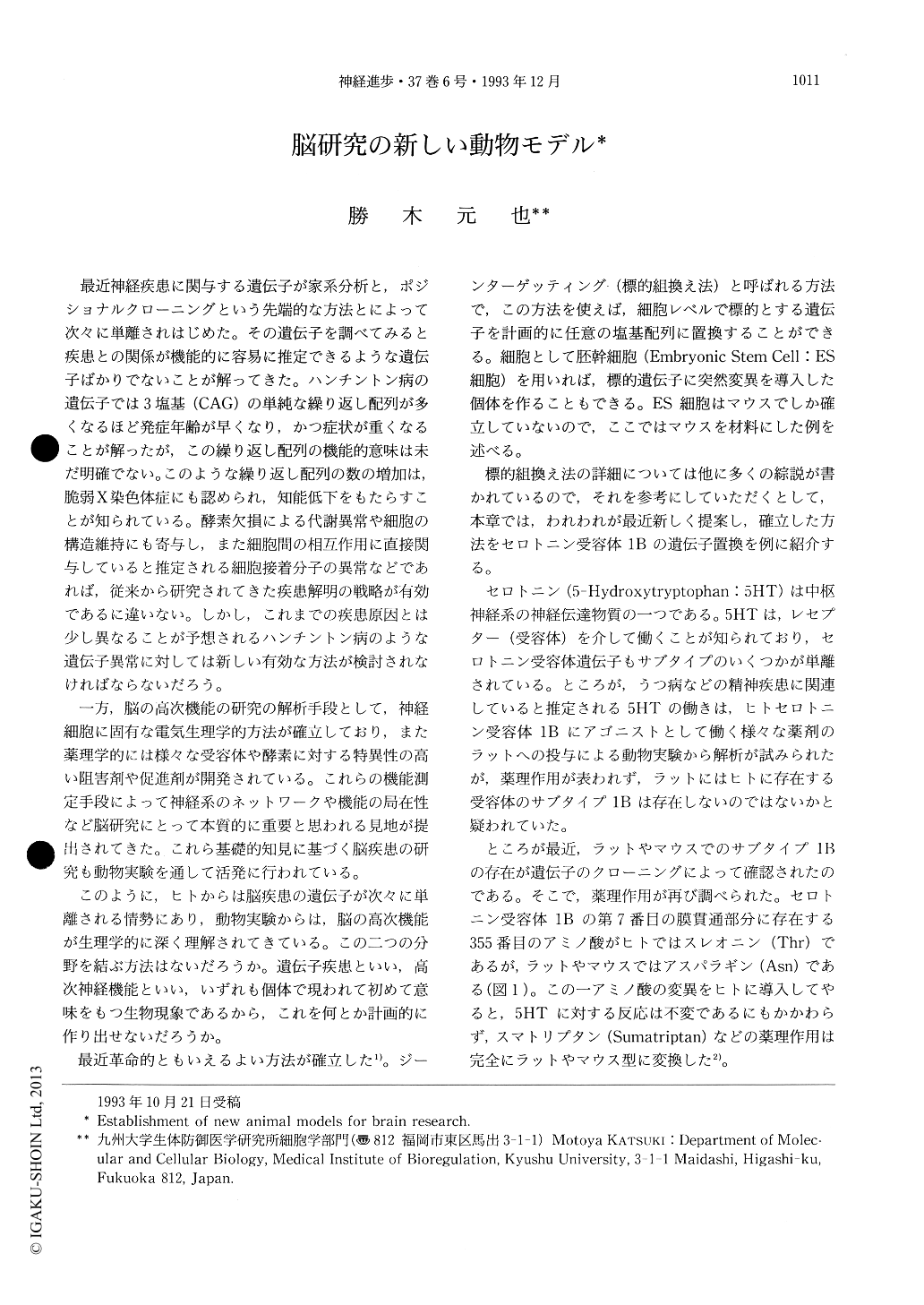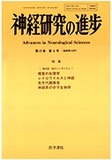Japanese
English
- 有料閲覧
- Abstract 文献概要
- 1ページ目 Look Inside
最近神経疾患に関与する遺伝子が家系分析と,ポジショナルクローニングという先端的な方法とによって次々に単離されはじめた。その遺伝子を調べてみると疾患との関係が機能的に容易に推定できるような遺伝子ばかりでないことが解ってきた。ハンチントン病の遺伝子では3塩基(CAG)の単純な繰り返し配列が多くなるほど発症年齢が早くなり,かつ症状が重くなることが解ったが,この繰り返し配列の機能的意味は未だ明確でない。このような繰り返し配列の数の増加は,脆弱X染色体症にも認められ,知能低下をもたらすことが知られている。酵素欠損による代謝異常や細胞の構造維持にも寄与し,また細胞間の相互作用に直接関与していると推定される細胞接着分子の異常などであれば,従来から研究されてきた疾患解明の戦略が有効であるに違いない。しかし,これまでの疾患原因とは少し異なることが予想されるハンチントン病のような遺伝子異常に対しては新しい有効な方法が検討されなければならないだろう。
一方,脳の高次機能の研究の解析手段として,神経細胞に固有な電気生理学的方法が確立しており,また薬理学的には様々な受容体や酵素に対する特異性の高い阻害剤や促進剤が開発されている。これらの機能測定手段によって神経系のネットワークや機能の局在性など脳研究にとって本質的に重要と思われる見地が提出されてきた。これら基礎的知見に基づく脳疾患の研究も動物実験を通して活発に行われている。
We developed a novel gene replacement method by using two steps of homologous recombination. We chose the 5-Hydroxytryptophan (5-HT) 1B receptor as a target gene. We constructed a targeting vector containing a cassette of the neo® and HSV-tk genes (neo-tk cassette) at the central part of the targeting vector. ES cells were electroporated by the first targeting vector containing the neo-tk cassette which confers the G418 resistance and GANC sensitivity. The targeted cells were selected with G418 alone and determined by Southern blot analyses. Then we replaced this targeted allele with the second targeting vector and by the GANC selection. With this method, we isolated an ES cell line, in which the 355th amino-acid, Arginine, was replaced to the human type gene, Threonine. This single amino-acid confers the major pharmacological differences between human and mouse 5-HT receptor. The established ES cell line does not carry any selectable marker genes, the neoR and HSV-tk genes, after all. In spite of the two steps of gene targeting and many passages, the ES cells are still able to transmit the replaced allele to the offspring through germ-line chimeras.

Copyright © 1993, Igaku-Shoin Ltd. All rights reserved.


